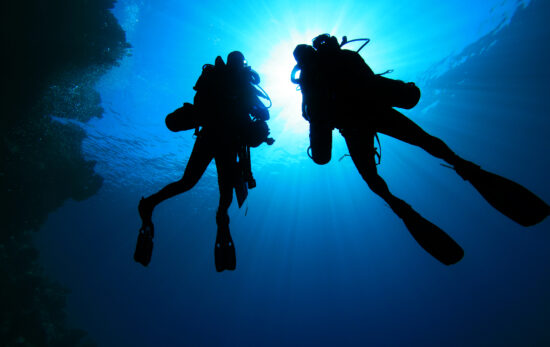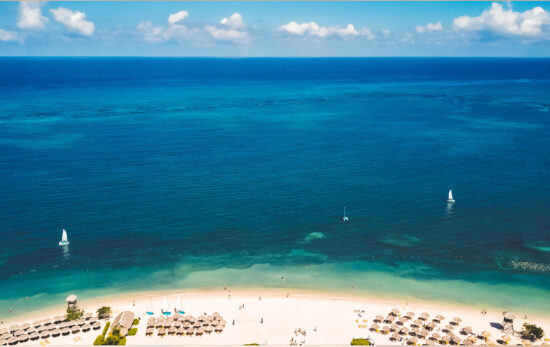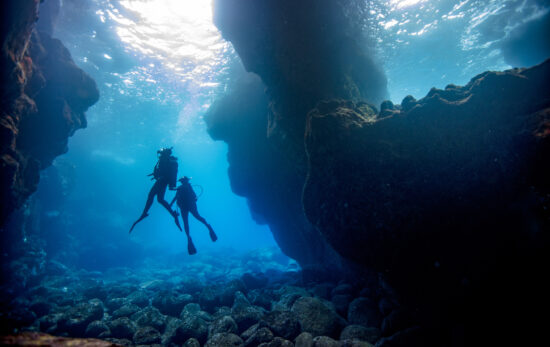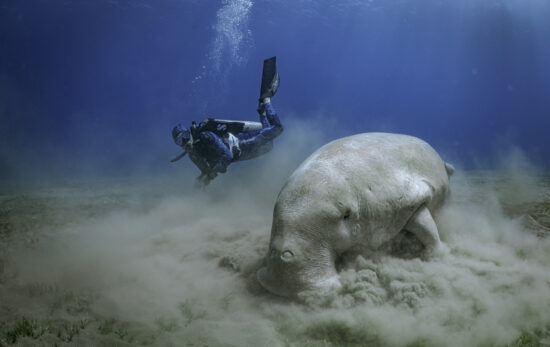We all love to see underwater images of vibrant coral reefs in crystal clear water and visibility that stretches as far as the eye can see, but is it realistic to expect this? Yes, in certain areas, and at certain times, it’s absolutely realistic, but that doesn’t mean it’s guaranteed. In other world-famous diving areas, visibility is significantly lower, but it doesn’t distract from the incredible diving that’s still on offer. Once you understand how to dive in limited visibility situations, even more dive sites become available to you. You’ll also find that lower-than-average visibility will stop being a disappointment and become an opportunity to try out your skills!
What Causes Poor Visibility?
Primarily, poor visibility is not caused by dirty water, it is simply due to suspended particles in the water. These may be sand particles caused by wave action agitating the bottom composition or other physical disturbances including divers’ fins! Another source of particles is finer silt particles which are often found when diving close to the shore and after rainfall – known as washout. On dive sites where the bottom composition is silt visibility is often lower, too.
However, not all particles are mineral based. Plankton, which attracts some of the ocean’s most impressive marine species, such as manta rays and whale sharks, also lowers visibility. ‘Plankton blooms’ occur when there is a dense cloud of plankton in the water column. Visibility will be lowered, but marine life sightings will be plentiful!
Scuba diving in poor visibility can be unnerving if you are not adequately prepared for it. Poor visibility is a potential hazard, but with the right training, gear, and knowledge, it doesn’t need to mean calling a dive or avoiding certain sites. Here are our top tips for safely diving in poor visibility.
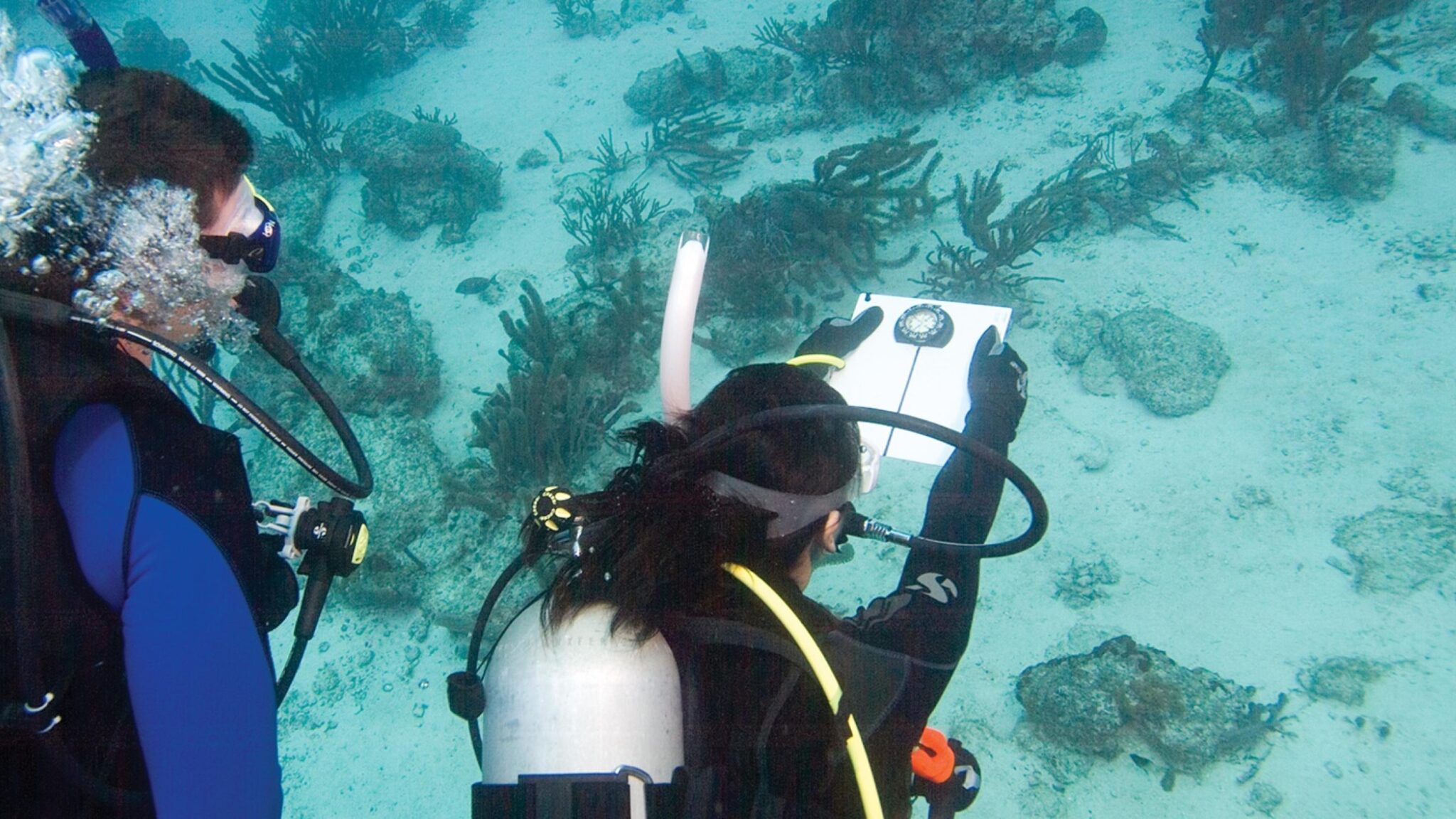
Get Trained for Diving in Poor Visibility
Training means knowledge, and knowledge is key! If you are an Open Water Diver, consider taking your Advanced Open Water Diver certification which includes a mandatory Underwater Navigation Dive. During your Advanced Open Water Diver course, you can also opt for electives, such as Night Diving or Search and Recovery. If you are already an Advanced Open Water Diver and want to develop these skills further, each Adventure Dive has a corresponding Specialty Course. Being properly trained gives you more skills to handle diving in poor visibility, and it also gives you more confidence – making your dives less stressful and more enjoyable!
Have the Right Gear for Scuba Diving in Poor Visibility
Different types of diving have different equipment needs, and diving in poor visibility is no exception. The following is a list of items recommended for diving in low visibility:
- Delayed Surface Marker Buoy: A DSMB is essential for safely surfacing, and the DSMB line is a reassuring visual reference.
- Dive Light: Useful for your buddy to locate you. Be aware, though, that shining the light directly in front of you may worsen visibility as the light illuminates any suspended particles. Angle the light from or out to the side for better results.
- Buddy Line: A handy tool to ensure you and your buddy stay safely in contact.
- Compass: For navigation when diving in extremely poor visibility. If using the compass function of your dive computer, make sure you calibrate it before diving.
- Tank Banger or Rattle: An audible signal in case of buddy separation which can also be used to signal to abort the dive.
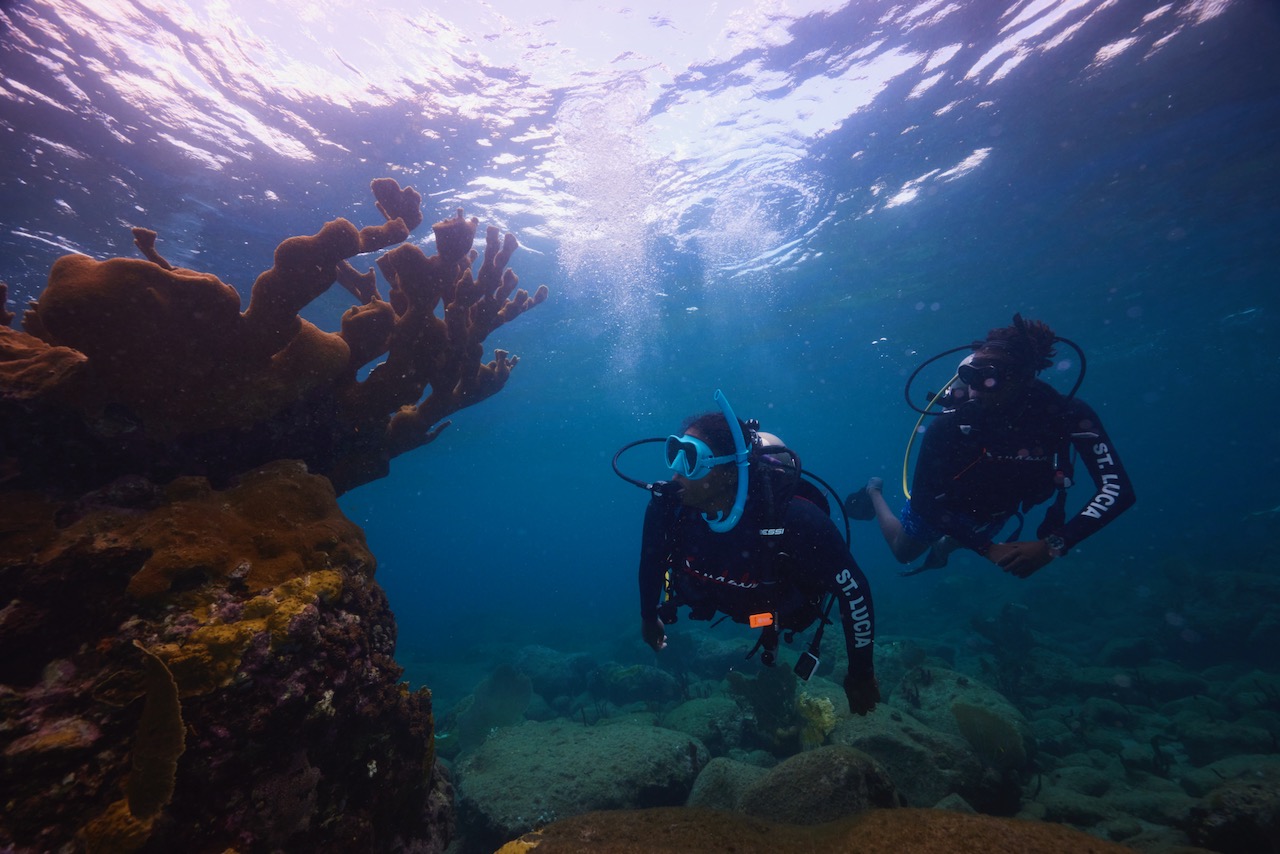
Maintain Buddy Contact
This is the single most important point to remember when diving in poor visibility – always maintain contact with your buddy. You and your buddy should make a dive plan together that includes buddy separation procedures. Once underwater, dive your plan.
If visual contact is not likely to be possible, you may want to consider using a buddy line. Before the dive, agree on how you will communicate underwater, including the use of audible signals and signals with underwater lights as you would when night diving.
Establish Points of Reference
Becoming disoriented is another concern when diving in poor visibility. When descending and ascending, use reference points, such as descent and ascent lines. Descent lines not only ensure you don’t become disoriented, but they also ensure you are not drifting off course before you even start the dive. Ascending using a line that is attached to a surface marker buoy or using the anchor line means you will surface where your boat expects you to, and you are protected from other boat traffic on the surface. Maintain contact with descent and ascent lines at all times.
If lines are not possible, use natural references by descending down a sloping reef, for example, rather than trying a potentially disorienting descent in the blue.
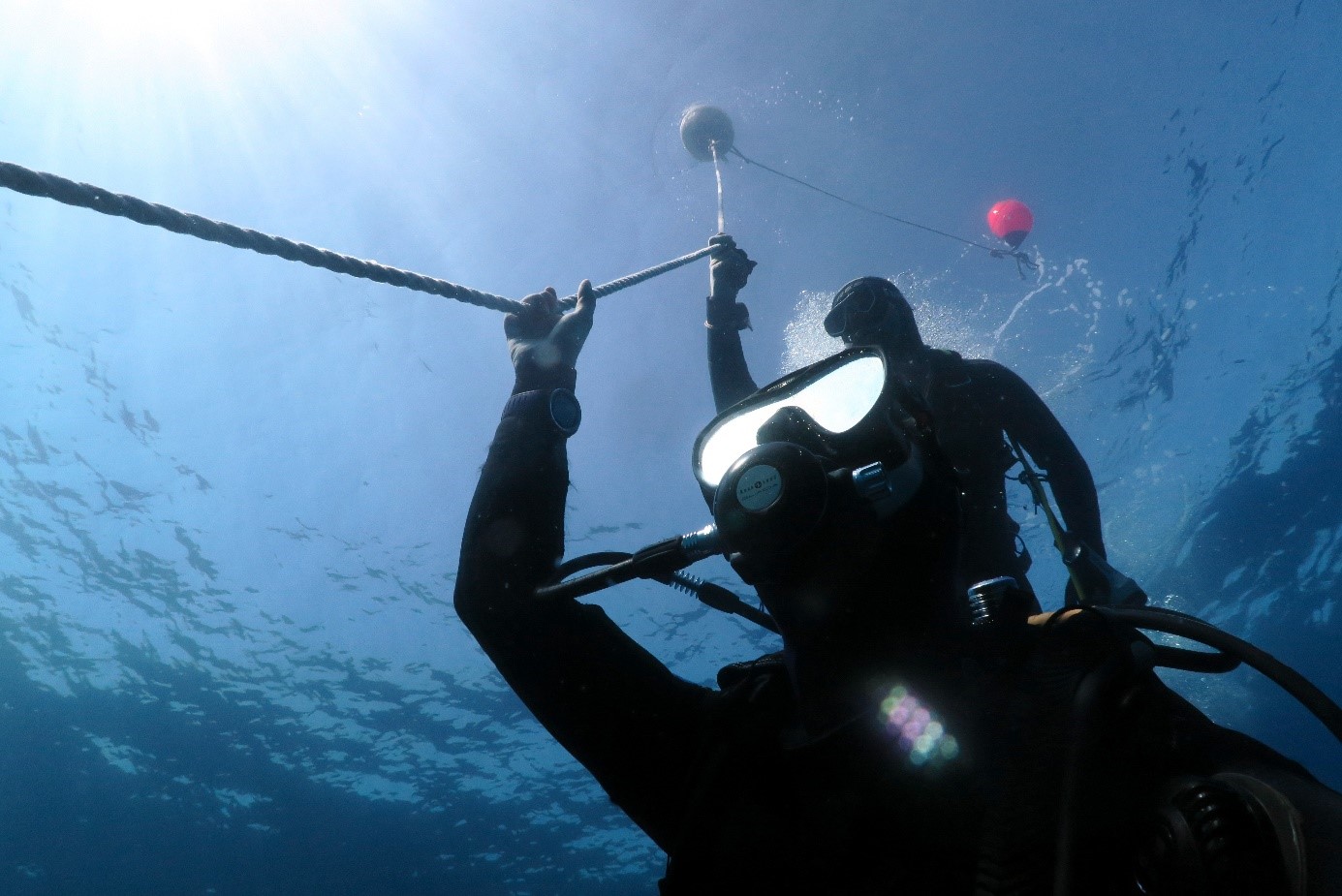
Use Underwater Guide Lines
When diving in poor visibility use reference points, such as coral bommies or by identifying parts of a wreck, throughout the dive. When visibility is extremely low, you may need to consider underwater guidelines. These could be guidelines that are already in place, or you lay your own with a reel during the dive. If you are laying guidelines, you should have training in how to do so to prevent the risk of entanglement.
Go Slow
Diving in poor visibility is anything but a race! Take your time and give yourself the opportunity to note visual references while making sure you are not leaving your buddy behind. Going slow is especially important if you become ‘lost’. Do not panic and blindly swim around. Stop, breathe, stay calm, and communicate with your buddy about what to do next. Panicking and swimming around without consideration will most likely take you further off course.
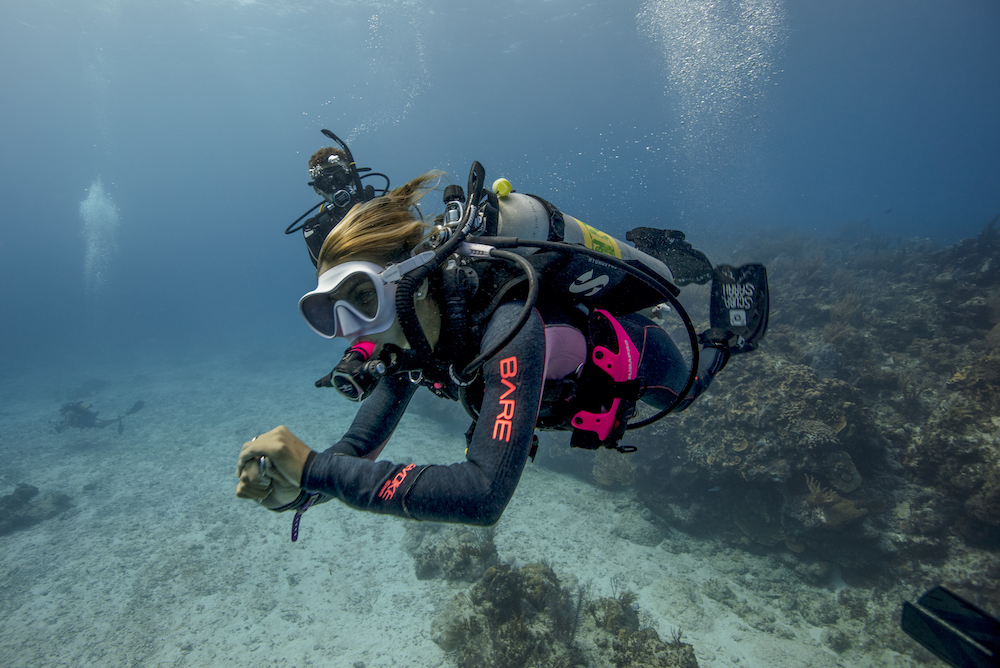
Accessorize with Color!
While the current trend in wetsuits and BCDs tends to be black, if you are diving in poor visibility, this won’t help your buddy to spot you. Opt for light and bright colors for your fins, mask, and wetsuit. If you already own black gear, consider a brightly colored headband and other accessories to make you more visible.
There’s No Place for Ego When Diving in Poor Visibility
No one likes to admit defeat or that they are lost, but from time to time it happens to most of us. Currents can interfere with the best made plans, and there are multiple factors that can result in disorientation. If you are lost, separated from your buddy, or become disoriented, abort the dive. The longer you stay underwater, the further away you could be swimming or drifting. In the event of buddy separation, a delay in surfacing could result in a delay in vital emergency assistance being dispatched.
Are you ready for your next diving adventure? Are you planning to enhance your diving knowledge and skills with your next PADI course? Check out incredible dive centers, resorts, and liveaboards around the world on PADI Travel! Or sign up for your next course today with PADI eLearning.

